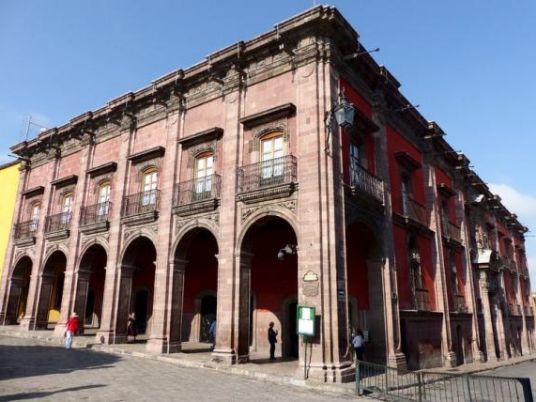
With cobblestone streets and no traffic lights, San Miguel de Allende has the look of a sleepy Mexican town.
But behind the colonial-era facades it hums with cultural activity: the town of about 80,000 people, barely three hours north of Mexico City, supports an estimated 120 fine art galleries and folk art museums.
In 2008, UNESCO named San Miguel a World Heritage site, citing it as a cradle of Mexican independence and highlighting its integration of architectural styles, from Baroque to neo-Gothic, within a 16th century Spanish colonial layout.
The city's landmark is the Parroquia church facade, a concoction of twisted lines, pointed arches and arrowed spires said to be inspired by postcards of Gothic European cathedrals.
It stands opposite the Casa de las Conspiraciones, or Conspiracies House, where local notables plotted the launch of the Independence War against Spain.
An early insurgent leader was town namesake Ignacio Allende, and his home on the Jardin is an independence history museum.
Also on the Jardin is the Canal House mansion, considered by UNESCO as a masterpiece for fusing the baroque and the neoclassical in its slender fluted shafts, elaborate ornamentation and carved doors.
An echo of Paris, one block away, is the Immaculate Conception Church's ribbed dome, believed to be modeled on the Hotel des Invalides, where Napoleon is buried. Like its Parisian inspiration, the statue-encircled cupola rests on twin rings of windowed galleries.
The murals at the next-door Bellas Artes feature an unfinished work by leading 20th century artist David Alfaro Siqueiros, whose students in New York included Jackson Pollock, offering a taste of abstractionism.
Across the street, Galeria Noel Cayetano specializes in contemporary Oaxacan art, which blends modern motifs with native animal and spirit imagery.
The style's best-known practitioner, Francisco Toledo, is Mexico's highest-priced living artist, with one painting selling for over $900,000.
Lower-priced Toledo engravings and Toledo-designed houseware and jewelry are offered at Galeria Nudo, also focused on art from Oaxaca, a southern state with thriving Indian traditions and languages.
San Miguel's biggest art hub is the 40-gallery Fabrica La Aurora, a former textile mill.
Often overlooked by visitors are extensive folk art museums like the Mask Museum and the four-floor Mexican Popular Toy Museum, which includes many whimsical exhibits.
One toy has a conveyor belt that shuttles a wedding party – flanked by a priest, skeleton and devil – between church and cemetery. Another is in the form of a barracuda-like airliner that bares its teeth, arching its tail upwards.
In Atotonilco, 12 km (8 miles) away, the museum-scale Galeria Atotonilco sells more than 1,000 folk art pieces crafted by scores of top-notch artisans from about a third of Mexico's 31 states.
Nearby is the religious Atotonilco Sanctuary, also a UNESCO World Heritage Site.
UNESCO calls Atotonilco's interior church decoration a masterpiece of 18th-century Mexican baroque art, particularly for its murals. Others have compared the frescoes' scope, quality and biblical sweep to the Vatican's Sistine Chapel.




